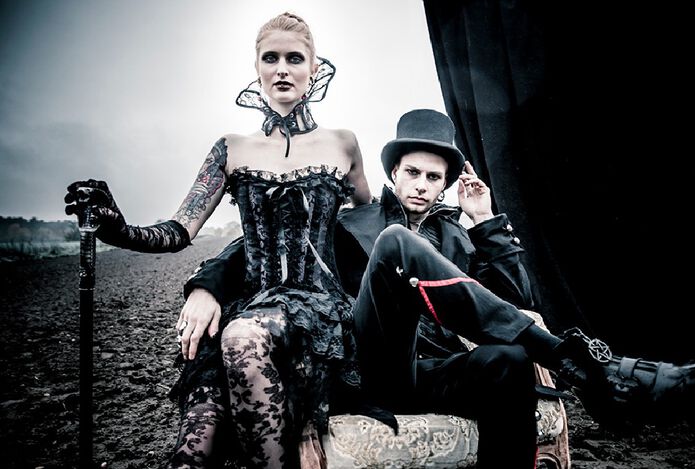The gothic scene is a subculture that grew out of punk in the late 1970s and was first noticed in the early 1980s. It was named after the music that was called Gothic by the music press of the time. One suspects that Joy Division's manager was not entirely innocent of this when he answered "gothic music" to a BBC reporter when asked what genre of music the band Joy Division would cater to. But there are a whole bunch of theories here.
Gothic rock was the original music of the scene and goths were the young people in front of the stage who took up themes like death and transience, copied the dark style of the bands and refined it with references to old horror films. Today, Gothic is directly linked to the fascination with morbid themes, which one also represents to the outside world. Individuality, a bit of rebellion and the intention to be left alone are behind the off-putting gothic outfits today.

Gothic has nothing to do with the Goths and only marginally with Gothic cathedrals. Rather, Gothic here means "gloomy" and "eerie", perhaps also "sad" and "longing". The word first referred to music that sounded the same and was clearly different from other genres of the time.
Between 1982 and 1983, the term "goths", then became more widely used. Ian Astbury, singer of the band "The Southern Death Cult" referred to fans of the Sex Gang Children as "goths" and shortly afterwards provided the template for the further use of the term himself. Music journalist Tom Vague referred to the Berlin audience watching Astbury on stage as "Hordes of Goths." The journalists had found their pigeonhole. By 1984, numerous articles on the new and strange youth culture had appeared in the English press, taking up and spreading the term "goth".
In the mid and late 90s, goths earned many negative headlines when some murders were linked to the scene because the perpetrators were goths. It was quickly assumed that the scene itself was to blame, because dark music and lyrics about death and transience would have an influence on people. Numerous reports and articles appeared that either served the cliché or defused the assumptions.
With the beginning of the 21st century, "Gothic" also developed more and more into a fashion term and a popular label for all kinds of products. Fashion producers use it to designate particularly dark, gloomy and trendy clothes. Gothic developed into a marketing term and therefore fell into disrepute among scene members. For some years now, people have been deliberately calling themselves Grufi or Waver again in order to avoid having to place themselves under the commercialised term "Gothic".
In society, "goth" has long been a common term for young people and adults who walk around in black clothes and listen to "strange" music. To distinguish oneself as a goth in the way that was possible back in the 80s, one has to resort to increasingly drastic styling today. The mainstream is hot on the heels of the goths.

